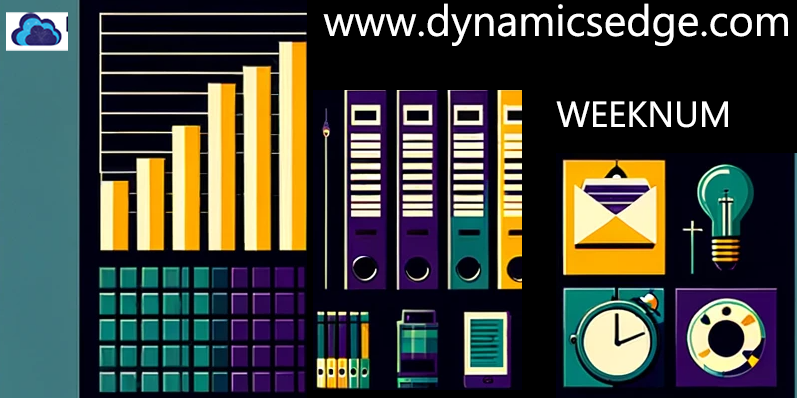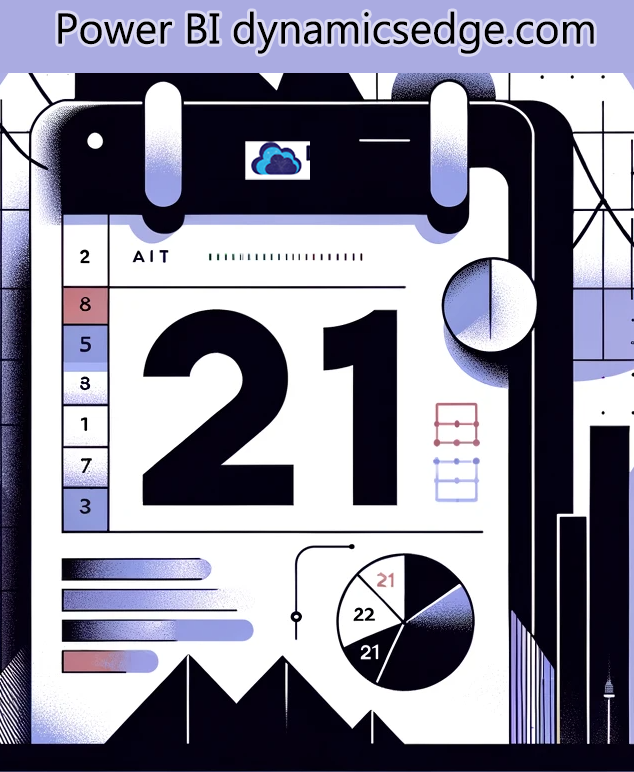Power BI training and Microsoft Excel training are both foundational pillars in the world of your increased effectiveness in data analysis and visualizations.

Power BI DAX training specifically deals with dax stand for Data Analysis Expressions (DAX). DAX is a powerful, versatile formula expression language used in Power BI, Analysis Services as well as Excel Power Pivot . DAX formulas tend to include values, functions & operators so you can do very advanced queries and calculations on your own data in related columns and tables in tabular data models to yield impressive actionable insights to make data-driven decisions!
While PBI and EXCEL both share a common heritage & lineage under Microsoft, their functionalities and applications diverge, which is painting a picture of complementarity rather than direct competition.
Power BI, which is, a suite of business analytics tools, “excels” in providing interactive visualizations and business intelligence capabilities, with a true emphasis on data warehousing and online analytical processing. Microsoft Excel, well on the other hand, is actually a veteran spreadsheet tool, quite celebrated for its flexibility in data manipulation, calculation, and straightforward analytics too.
DAX (Data Analysis Expressions) in Power BI is a versatile formula language specifically designed for data analysis. It tends to extend the capabilities of Microsoft Power BI by enabling a lot more complex data manipulation and analysis tasks. Excel functions, though somewhat similar in concept, tend to be generally used for a broader range of tasks. This may include basic calculations, data analysis, and visualizations. DAX functions in Power BI are more often quite a bit more sophisticated, designed to work with relational data and perform dynamic aggregation, versus Excel’s more static and cell-based calculations.
So let us now explore, together, the practicality and utility of DAX functions to illuminate the distinctiveness of Power BI and Excel in handling data.
1. SUM and SUMX: In Power BI, SUM adds up numbers in a column, while SUMX is a more powerful variant that can perform row context iterations. Excel’s SUM function, akin to Power BI’s SUM, calculates the total of a set of values. The Microsoft Excel training January 2024 distinction lies in SUMX’s ability to handle complex, row-by-row computations that Excel’s SUM cannot.
2. CALCULATE: This function in Power BI modifies the context in which a data expression is evaluated. It’s a powerful tool for dynamic calculations. The combination of SUMIF(S), AVERAGEIF(S), or COUNTIF(S) can mimic some of its functionalities, although perhaps with less sophistication.
3. RELATED and LOOKUPVALUE: RELATED in Power BI pulls data from related tables, similar to VLOOKUP in Excel. LOOKUPVALUE in Power BI is also similar to VLOOKUP but offers more flexibility. VLOOKUP in Excel searches for a value in a column and returns a value from a different column in the same row.
4. DATEADD and EDATE: DATEADD in Power BI shifts a date by a specified number of intervals. In Excel, EDATE performs a similar function by adding a specified number of months to a date.
5. IF and SWITCH: The IF function exists in both Power BI and Excel with similar usage. SWITCH in Power BI & Excel, a more advanced version of IF, allows for multiple conditions and outcomes. Nested IF can achieve similar results but is less elegant and more complex to implement than using SWITCH. Sometimes IF is more appropriate, other times SWITCH is better.
The WEEKNUM function in both DAX and WEEKNUM Excel exemplifies the subtle differences in their approach to data analysis. Power BI WEEKNUM training in Power BI, WEEKNUM returns the week number of a specified date as per a defined calendar system. In Microsoft Excel WEEKNUM training Excel’s WEEKNUM function does the same, allowing users to specify the day that a week begins on. While both functions seem similar, their application in their respective environments highlights the differing orientations of Power BI and Excel.
Power BI’s version is typically used in complex data models involving time intelligence, whereas Excel’s application is more straightforward, suited for individual or less complex datasets.
For a National Appliance and Parts Outlet: Utilizing WEEKNUM DAX in Power BI can unveil patterns in sales data for the stainless steel shower panel, such as a DAX SKU DA-211-BN. By analyzing sales data across various weeks, it’s possible to start pinpointing peak demand periods. Neglecting this analysis could lead to missed opportunities for targeted promotions. In contrast, Excel might offer a simpler analysis but could lack the depth and integration with broader data sets that Power BI offers.
In a Regional Shop: The DAX 355ml vegetable oil shampoo’s best-selling weeks can be identified using WEEKNUM in Power BI. This insight can guide inventory management and marketing strategies. Excel could be used for a smaller scale analysis but might not provide the same level of detail or ease in integrating with other business data.
For a Review Website: Analyzing reader trends for articles on “Ezri Dax” using WEEKNUM in Power BI, such as Ezri Dax, the seventh final season of science fiction Star Trek: Deep Space Nine or Why Ezri Replace Jadzia As Dax Explained By Star Trek could reveal when and why traffic spikes occur. Correlating these trends with external events could uncover underlying patterns. Excel, while capable of performing basic trend analysis, may not offer the same level of depth or ease in combining different data sources as Power BI.
Here the use of WEEKNUM in Power BI, as opposed to Excel, provides a more integrated and comprehensive analysis. Now this can be particularly beneficial in complex or large-scale data environments. However, for simpler tasks or individual data analysis, Excel with its familiar interface might be more accessible.
In Power BI, the way WEEKNUM function works in time intelligence is by returning the week number of a given date within a year.

Significantly, the return type 21 in WEEKNUM is aligned with the ISO 8601 standard, commonly used in Europe. This standard specifies that the first week of the year is the one with the majority of its days (four or more) falling in the new year.
Understanding return type 21 is so important for Power BI analysts, especially when dealing with international iso data or operating in regions that tend to adhere to the ISO 8601 standard. It helps to make sure that week-based calculations are kept consistent with international norms. This can be a cornerstone of your global business scenarios and therefore quite handy to know.
Let us now imagine a scenario involving “DAX MoneyControl”, a financial company, which is analyzing the stock “BSE Infra” based in Zurich, Switzerland. The company wants to determine if there’s a correlation between specific week numbers and the stock’s price fluctuations. Using the WEEKNUM function with return type 21, they can begin to accurately align their analysis with the standard European calendar, enabling accuracy in a region following ISO 8601.
Furthermore, when you start combining WEEKNUM with other DAX functions and Power BI features, you can go even further. Imagine if DAX MoneyControl could perform advanced predictive analytics. For example, they could integrate WEEKNUM with time-series forecasting functions to predict future stock movements based on historical data. When overlaying week-based trends upon other financial indicators or external events (such as – economic announcements or sector-specific news), they could really gain deeper insights and make much more well-informed investment decisions. This kind of approach really exemplifies the power of combining various aspects of DAX and Power BI to extract meaningful, actionable insights from data.

Microsoft Fabric training January 2024 for powerful large scale big-data-driven actionable insights in groundbreaking ways. This may be available for a new product called Microsoft Fabric, now in preview, and is a groundbreaking analytics product designed to unify all aspects of an organization’s data and analytics into a cohesive whole. It makes the best of Microsoft Power BI integrations, as well Azure Synapse, and Azure Data Factory, offering a quite comprehensive Software as a Service (SaaS) platform. This kind of unification empowers seamless collaboration among data engineers, data warehousing professionals, data scientists, analysts, and business users, encouraging a really robust data culture.
For Microsoft Power BI users, Fabric’s introduction is particularly significant. It helps to maintain pretty much all existing functionalities of Power BI, while Power BI Premium users can easily switch to Fabric through the admin portal. Fabric extends the capabilities of Power BI by standardizing on open data formats like Delta Lake and Parquet, enhancing performance and reducing data duplication and management efforts. With Direct Lake mode, Power BI datasets can be queried directly against OneLake, essentially eliminating the need for data movement and refreshes. This feature brings together real-time and imported data analysis capabilities, offering enhanced flexibility and efficiency.
Fabric’s integration with development tools like Azure DevOps training January 2024 further streamlines collaboration, allowing for easy tracking, version control, and updates in Power BI content. This integrated approach simplifies the complex tasks of data management, including user roles, data ingestion, security, compliance, and more, on a single platform.
Microsoft Fabric event streams provide a centralized location for capturing, transforming, and routing real-time events to various destinations without the need for hard coding. This feature supports multiple kinds of source connectors as well as destinations, enabling pretty easy data flow management and organization. Imagine you are an electronics retail manufacturer – for you, leveraging Fabric’s event streams and other features could significantly enhance your data analytics capabilities. This could include real-time monitoring of supply chains, customer behavior analysis, and predictive maintenance of electronic products. Compared to Power BI and Excel, Fabric offers a more comprehensive, integrated approach to data analytics, enabling advanced analytics and predictive insights that would be challenging or impossible with Power BI Desktop and the Power BI service alone.
Microsoft Fabric represents a very significant advancement in data analytics, offering a truly unified, efficient platform for comprehensive data analysis and management. Its in-built integration with Power BI marks a significant leap forward, enabling quite a bit more sophisticated, real-time, and predictive analytics that could really transcend the capabilities of traditional BI tools.
Have a Question ?
Fill out this short form, one of our Experts will contact you soon.
Call Us Today For Your Free Consultation
Call Now